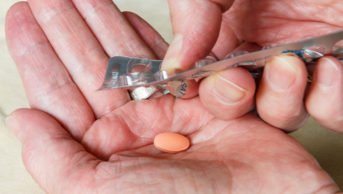
Shutterstock.com
New prescriptions for statins have halved since 2006, with a particularly steep drop in prescriptions to patients at high risk of cardiovascular disease (CVD), a study has found.
But while overall statin initiation rates are falling, there has been a rise in statin prescriptions to patients at low-to-intermediate risk of CVD, the study published in the British Journal of General Practice says.
The study looked at 1.4 million patients across 248 GP practices in England and Wales who were followed for five years. In that time, 15.31% patients were started on a new course of statins.
The National Institute for Health and Care Excellence (NICE) recommends that GPs use the QRISK2 algorithm to calculate a patient’s risk of developing CVD in the next ten years. In 2014, the “risk threshold” — the data point above which statins are advised — was reduced from a 20% risk over ten years to 10%.
Despite this lowering of the threshold, statin prescriptions have continued to fall among those patients who stand to benefit the most, the report’s authors found.
Highlighting other concerns arising from their findings, the authors noted that most patients who began statin treatment since 2012 had never had their QRISK2 score calculated. Of those who had, one in six were identified as “low risk” and therefore should not have been prescribed the medication. This “significant overtreatment” among the low-risk group contrasts sharply with the decline of statin initiation among high-risk patients.
The report’s authors, from the University of Birmingham, suggest that this apparently contradictory behaviour could be partly due to “a dramatic reduction in the cost of prescribing when simvastatin came off patent in 2003”. Cheaper statins could have led to a saturation of prescriptions among the population who were, pre-2014, eligible. Since the threshold was lowered to 10%, the authors argue, “patients who could potentially be prescribed statins would be the newly-eligible” — the lower-risk group.
The authors also speculate that in recent years, reports of side effects may have influenced GPs’ decisions to prescribe statins, and patients’ decisions to accept the treatment.


